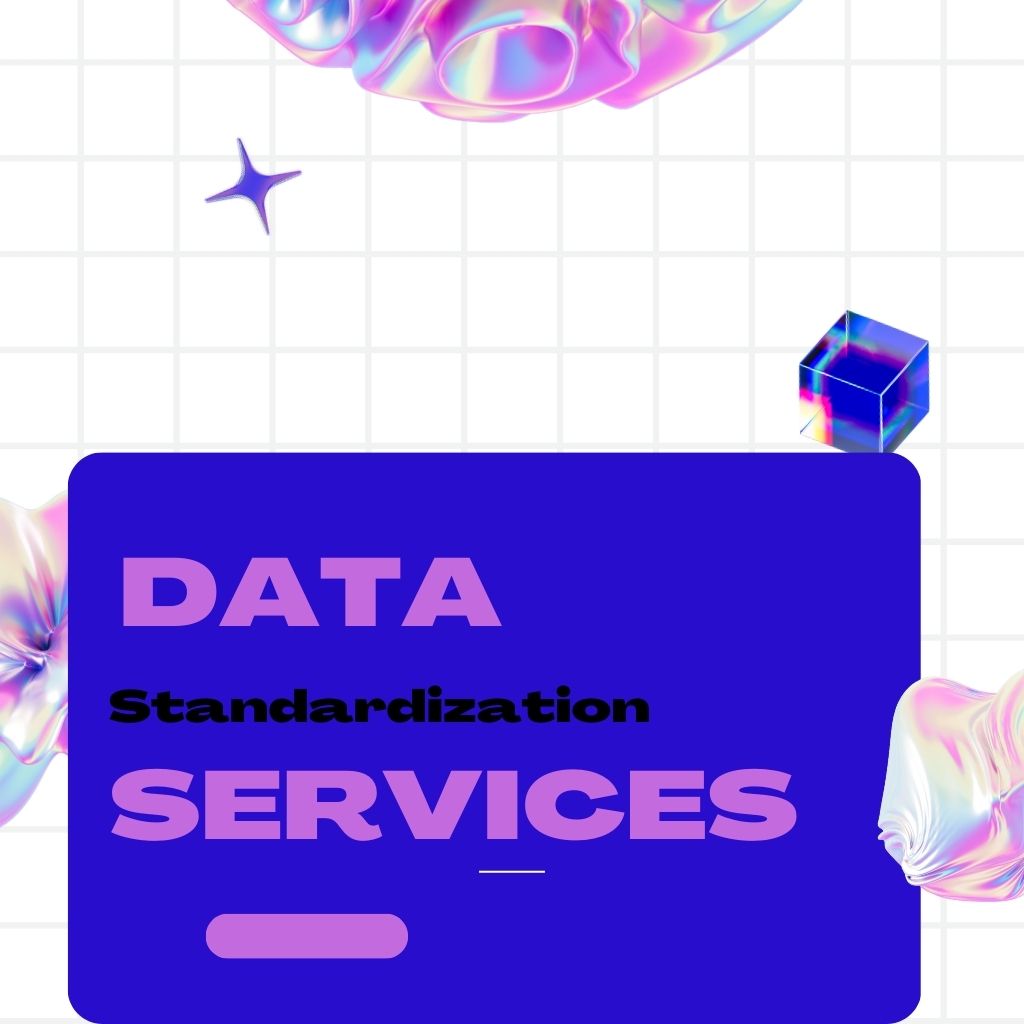
Introduction: The Power of Standardized Data
In today’s data-driven business environment, organizations are constantly inundated with vast volumes of information. However, raw data without consistency can lead to inaccurate analysis, operational inefficiencies, and poor decision-making.
Data Standardization Services are essential for transforming disparate, inconsistent datasets into structured, uniform, and reliable information. By applying standardized formats, businesses can enhance data quality, streamline operations, and make strategic, data-driven decisions.
This article explores the importance, methodologies, benefits, and best practices of data standardization services, showing how clean, consistent data drives efficiency, accuracy, and long-term growth.
1. What is Data Standardization?
Data standardization is the process of transforming data into a consistent format that adheres to predefined rules or industry standards. It involves correcting inconsistencies, normalizing data, and applying uniform structures to ensure:
-
Accurate analysis
-
Reliable reporting
-
Consistent customer records
-
Seamless integration across systems
Standardized data eliminates duplication, reduces errors, and improves operational and analytical efficiency.
2. Why Data Standardization is Critical
Inconsistent data can lead to misguided business decisions, operational inefficiencies, and wasted resources. Key reasons why data standardization is essential include:
-
Improved Data Quality: Reliable and accurate data forms the foundation for business decisions.
-
Enhanced Analytics: Standardized data allows for seamless reporting, insights generation, and forecasting.
-
Operational Efficiency: Reduces errors, redundancies, and time spent reconciling inconsistent data.
-
Customer Experience: Consistent records prevent confusion, duplication, and miscommunication.
-
Regulatory Compliance: Ensures adherence to industry standards and data governance policies.
3. Common Challenges with Non-Standardized Data
Organizations often face several issues when data lacks consistency:
-
Duplicate Records: Multiple entries for the same customer or product.
-
Inconsistent Formats: Variations in names, addresses, dates, and phone numbers.
-
Missing or Incomplete Data: Inadequate information prevents accurate decision-making.
-
System Integration Errors: Conflicting formats between multiple software platforms.
-
Human Entry Errors: Typos or inconsistent practices during manual data entry.
Addressing these challenges through standardization ensures reliable, actionable information.
4. Methods of Data Standardization
Several methods are used to standardize data efficiently:
a) Data Cleansing and Validation
Identify errors, inconsistencies, and missing values, and correct or remove them.
b) Format Standardization
Convert dates, phone numbers, addresses, and names into a consistent format.
c) Deduplication
Remove duplicate entries and consolidate information for accuracy.
d) Data Normalization
Ensure numerical and categorical data adheres to uniform scales or standards.
e) Automated Tools and AI Solutions
Leverage software and AI to process large datasets efficiently, ensuring consistency and accuracy.
5. Benefits of Data Standardization Services
Implementing professional data standardization offers multiple advantages:
-
Reliable Analytics: Clean, consistent data ensures accurate reporting and insights.
-
Operational Efficiency: Reduces manual work and prevents errors.
-
Improved Customer Experience: Consistent customer records enhance engagement and loyalty.
-
Compliance Assurance: Aligns data with industry standards and legal requirements.
-
Cost Reduction: Minimizes errors and redundancies, saving time and resources.
-
Seamless Integration: Standardized data enables smooth integration across multiple systems.
6. Best Practices for Data Standardization
Adhering to best practices ensures maximum benefits:
a) Define Standards Early
Establish clear rules for formats, naming conventions, and validation criteria.
b) Regular Data Audits
Periodically review datasets to ensure ongoing consistency and accuracy.
c) Use Automation Tools
Implement software solutions for large-scale data standardization to reduce manual errors.
d) Train Employees
Educate staff on data entry standards and the importance of consistency.
e) Integrate Across Systems
Ensure that all platforms, CRMs, and databases adhere to the same standards.
f) Document Processes
Maintain clear documentation for reference and quality control.
g) Continuous Improvement
Analyze trends and feedback to refine data standardization processes over time.
7. Tools and Technologies for Data Standardization
Several tools make data standardization efficient and scalable:
-
Data Cleaning Tools: OpenRefine, Trifacta, Talend
-
CRM Integration Tools: Salesforce, HubSpot, Zoho CRM for maintaining consistent records
-
AI-Based Solutions: Machine learning algorithms for intelligent data normalization
-
Spreadsheet Tools: Excel, Google Sheets with validation and formatting rules
-
Automation Platforms: Zapier, Integrately for standardizing data during imports and integration
Leveraging these technologies ensures consistency, reduces errors, and saves time.
8. Challenges and Solutions in Data Standardization
Even with advanced tools, businesses face challenges:
-
Large Volumes of Data: Use automation and AI for high-speed processing.
-
Complex Data Structures: Map and normalize complex datasets systematically.
-
Integration Across Systems: Implement data governance protocols and validation rules.
-
Human Errors: Establish clear training and enforce standardized procedures.
-
Continuous Monitoring: Periodically audit data to prevent inconsistencies from reappearing.
Addressing these challenges ensures long-term reliability and integrity of business data.
9. Business Impact of Data Standardization
Standardized data is a strategic asset that drives growth and efficiency:
-
Better Decision-Making: Accurate insights enable informed strategic decisions.
-
Operational Excellence: Consistency reduces errors and boosts productivity.
-
Customer Satisfaction: Accurate, reliable records improve communication and trust.
-
Marketing Efficiency: Target campaigns effectively without duplication or errors.
-
Competitive Advantage: Data-driven organizations respond faster and smarter than competitors.
10. Final Thoughts
Data Standardization Services are crucial for organizations that want to maximize efficiency, accuracy, and strategic decision-making. By transforming raw, inconsistent data into reliable, uniform, and actionable insights, businesses can enhance operations, strengthen customer relationships, and gain a competitive edge.
By combining structured processes, technology, and best practices, organizations can maintain data integrity, reduce operational errors, and leverage information for sustained growth.
Read more > https://datahome.solutions/data-standardization-services-transforming-raw-data-into-actionable-insights/
#DataStandardization #DataCleaning #DataQuality #CRMDataManagement #OperationalEfficiency #BusinessIntelligence #DataIntegrity
